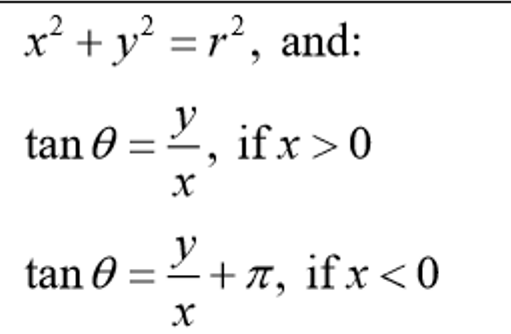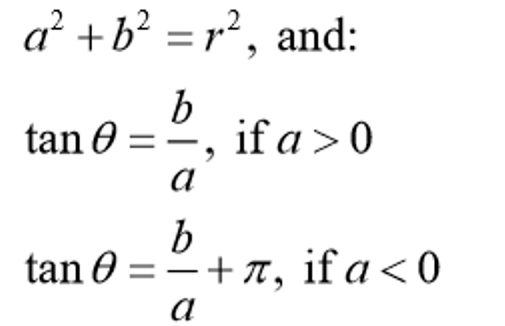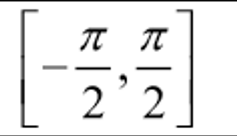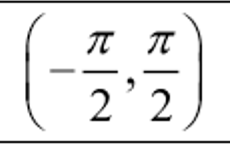APPC Exam Review
1/54
Earn XP
Description and Tags
Name | Mastery | Learn | Test | Matching | Spaced |
|---|
No study sessions yet.
55 Terms
The a in g(x)=af (b(x±h))±k
Vertical dilation by a factor of |a|
Reflection over x-axis if a <0
The h in g(x)=af (b(x±h))±k
Horizontal translation
Left when x+h, Right when x-h
The k in g(x)=af (b(x±h))±k
Vertical translation
Up when k > 0, down when k<0
The b in g(x)=af (b(x±h))±k
Horizontal dilation by a factor of
Reflection over y-axis if b<0
Average Rate of Change between (a, f (a)) and (b,f(b))
f(b)-f(a)
b-a
Where is a function positive/negative?
Positive-when the y-coordinates are above the x-axis
Negative - when the y-coordinates are below the x-axis
What defines an increasing/decreasing function?
Increasing when the outputs increase as the inputs increase
Decreasing when the outputs decrease as the inputs increase
What is a Point of Inflection?
The ordered pair where concavity changes
What justifies an increasing rate of change?
When a function is concave up
What justifies a decreasing rate of change?
When a function is concave down
What does it mean if c is odd in f(x)=a(x-b)?
c is a zero with odd multiplicity
The graph of ƒ will cross the x-axis at x=c
What does it mean if c is even in f(x)=a(x-b)?
c is a zero with even multiplicity
The graph of f will touch the x-axis and turn at x=c
What is an even function?
When f(x)=√(x)
Appears symmetric about the y-axis
What is an odd function?
When f(x)=-f(x)
Appears symmetric about the origin (rotational)
Notation for end behavior as inputs decrease without bound

Notation for end behavior as inputs increase without bound


Horizontal asymptote test when

When does a rational function have a slant asymptote?
When the degree of the poly in the numerator is exactly one more than the degree of the poly in the denominator
Use long division to find
Where does a rational function have a hole?
When a factor cancels in numerator and denominator (unless if covered by a V. A.)
Example at x = a in
r(x)= (x-a)/(x-a)(x-b)

Where does a rational function have a vertical asymptote?
When a factor is a zero of the denominator after canceling
Example x = b in r(x)= (x-a)/(x-a)(x-b)

Standard form of an arithmetic sequence

Standard form of a geometric sequence

Exponential decay in y=abx
When 0<|b|<1
• As the inputs increase, the outputs are moving toward the x-axis
Exponential growth in y=abx
When |b|>1
As the inputs increase, the outputs are moving away from the x-axis
logax + logay =
loga(xy)
nlogax =
logaxn
logax - logay =
loga(x/y)
logax
logay
logyx
Pythagorean Trig Identity
sin2x + cos2x = 1








Vertical asymptotes of f(x) = asecbx + d

Vertical asymptotes of f(x)= a csc bx+d

Vertical asymptotes of f(x)= a cot bx+d

Vertical asymptotes of f(x)= a tan bx+d

Period of y = a*sin(b(x+c))±d
or y = a*cos(b(x+c))±d
2π/b
Period of y = a*tan (b(x+c))±d
or y=a cot (b(x+c))±d
π/b
How to convert (r,θ)→(x, y)?
x = rcosθ
y = rsinθ
How to convert (x,y)→(r,θ)

How to convert a + bi to
(rcosθ)+i(rsinθ)

Arc length
θ*r
Range of y = sin-1x

Range of y = cos-1x

Range of y = tan-1x

In a polar function, when is the distance from the origin increasing?

In a polar function, when is the distance from the origin decreasing?

What is error?
Predicted Value (from regression) - Actual Value
or
The opposite sign of the residual
Compare period vs. frequency in a trig function
Period is the length required for one full cycle of outputs
Frequency is the reciprocal of period
Frequency is how many cycles per unit of time
What type of function has constant first differences over equal-length inputs?
A linear function
What type of function has constant rate of change in first differences over equal-length inputs?
A quadratic function
What type of function has constant third differences over equal-length inputs?
A cubic function
What type of function has proportional outputs over equal-length inputs?
An exponential function
What type of function has proportional inputs over equal-length outputs?
A logarithmic function